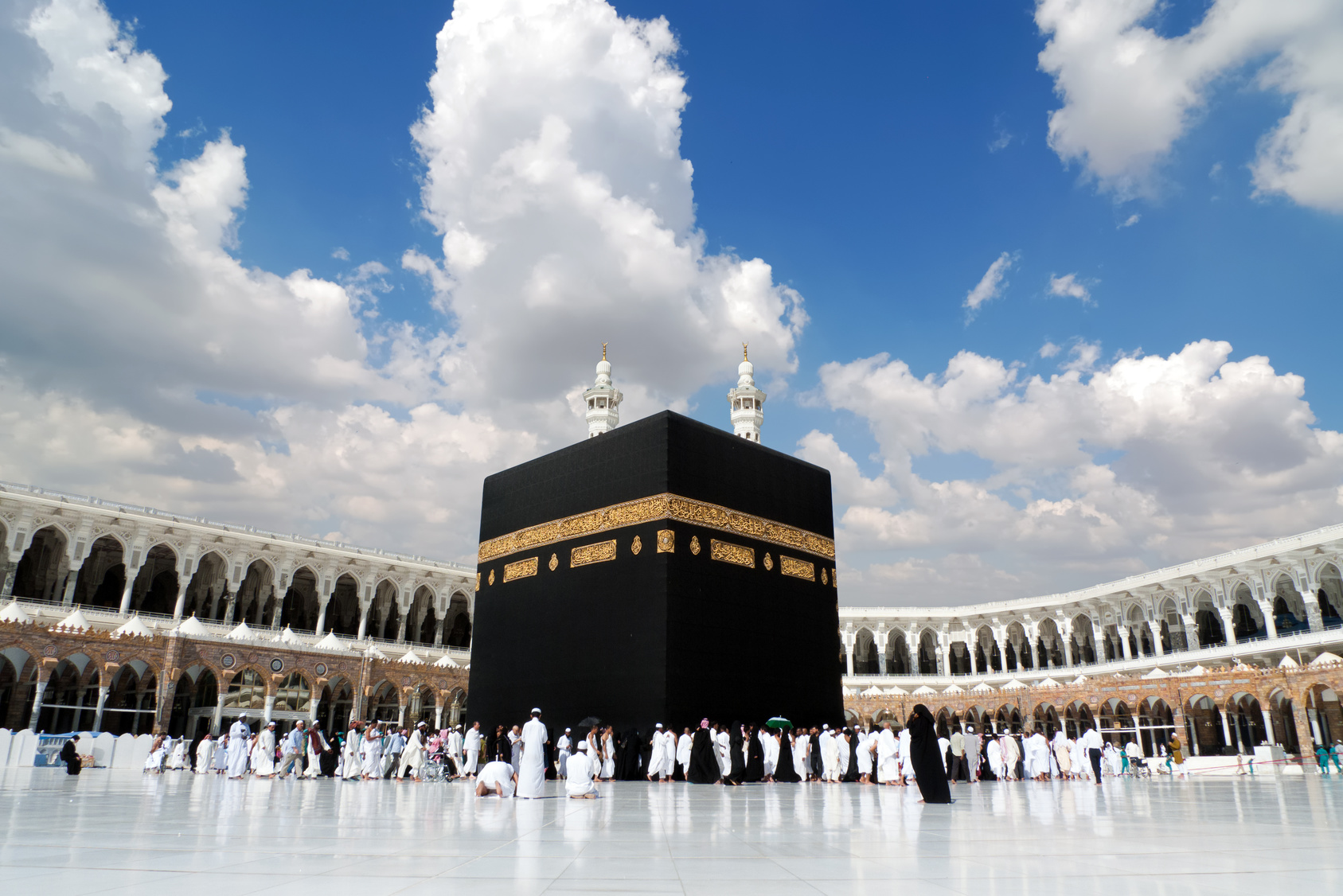Every year, millions of Muslims from around the world gather annually in Mecca to perform Hajj – the sacred Muslim pilgrimage.
Hajj became obligatory for every able-bodied Muslim adult who has the financial means to do after Prophet Muhammad’s “farewell pilgrimage” in 632 AD.
According to Islamic tradition, the Kaaba – a black silk-clad stone structure at the heart of the Grand Mosque in Mecca – was built by the Prophet Abraham and his son Ishmael.
Every year, between two and three million people participate in the pilgrimage.
However, due to the coronavirus pandemic, there were only 10,000 pilgrims in 2020. The following year saw 58,700 pilgrims, and last year’s numbers picked up again to one million.
Hajj is a spiritual, emotional and physical challenge that tests the patience and temperament of the pilgrim.
It occurs in Dhul-Hijjah, the 12th and final month of the Islamic lunar calendar, between the eighth and 13th days of the month.
This year, Hajj is taking place between June 26 and July 1. Here is a step-by-step guide to the rituals on each day:

Day 1
Intent and ihram – The very first rite of Hajj is to make a pure intention and to enter ihram – a pilgrim’s sacred state – when crossing the outer boundaries of Mecca, called Miqat.
Entering ihram entails wearing plain garments – two unstitched pieces of cloth for men, or loose-fitting clothing for women – as well as following certain rules, such as not giving in to anger or engaging in sexual activity.
Pilgrims then perform tawaf, which means circling the Kaaba in an anticlockwise direction seven times, and sai, which refers to running between the Safa and Marwa hills.

Mina, the tent city – After that, the pilgrims travel by foot on pilgrim paths or take a bus for the 8km (five-mile) journey to Mina, a tent city just outside of Mecca.
The pilgrims spend the day in Mina, setting out the next morning at dawn. Most of the time in Mina is spent in prayer, supplications and remembering Allah (God).
Day 2
A day on Arafat – The Day of Arafat is considered one of the most important days, not just of Hajj, but of the Islamic calendar. After making the 15km (nine-mile) journey from Mina, pilgrims spend the day at Mount Mercy in reverent prayer.
This is known as wuquf – the act of standing before Allah from noon to sunset.
The site is particularly revered as the place where the Prophet Muhammad delivered his last sermon.
Around the world, many Muslims choose to fast on this day.

Heading to Muzdalifah – After sunset, it is time to move again, this time to Muzdalifah – a 11km (7-mile) trip – where the pilgrims will spend the night under the stars. Many also begin collecting 49 pebbles here for the next day’s rites, for which they will depart again just before sunrise.
Day 3
Nahr and stoning the devil (rami) – The 10th of Dhul-Hijjah is Eid al-Adha, a day celebrated by Muslims around the world as the greater of the two Muslim holidays.
Leaving Muzdalifah, the pilgrims arrive back in Mina before dawn to perform the first rami, throwing seven pebbles at the largest of three columns known as Jamarat al-Aqaba.

This act is a symbolic stoning of the devil, based on historical tradition. Muslims believe that God told Abraham to sacrifice his son as proof of his faith.
It is believed that at this spot in Mina, the devil appeared and tried to dissuade Abraham from heeding the command. Abraham responded by throwing stones to scare him off.
Muslim pilgrims should also sacrifice an animal, known as nahr. Either a camel or lamb is suitable, and the meat should be distributed to the needy. Pilgrims can either buy sacrifice coupons/vouchers, which state that the sacrifice has been made on their behalf or perform their own sacrifice.
Days 4 and 5
The act of throwing stones is repeated for the next two days, pelting the three pillars using seven pebbles each in order by starting with: Jamarat al-Ula (the small pillar), then Jamarat al-Wusta (the second/middle pillar) and finally, Jamarat al-Aqaba (the third/large pillar).
Day 6
Halq or taqsir – Upon completion of rami, the 12th day of Dhul-Hijjah, the men shave their heads (halq) or trim their hair (taqsir). Women can trim their hair by the length of a fingertip.

The farewell tawaf – After that, the pilgrims can remove their ihram clothes. Many will then proceed to Mecca to perform tawaf and sai again.
When that has been done, they return to their campsite in Mina, marking the completion of Hajj.
Many pilgrims also visit Medina, the second holiest city in Islam, before heading home. Medina is not part of the pilgrimage but is regarded as the site where Prophet Muhammad is buried along with his closest companions.

SOURCE : AL JAZEERA






